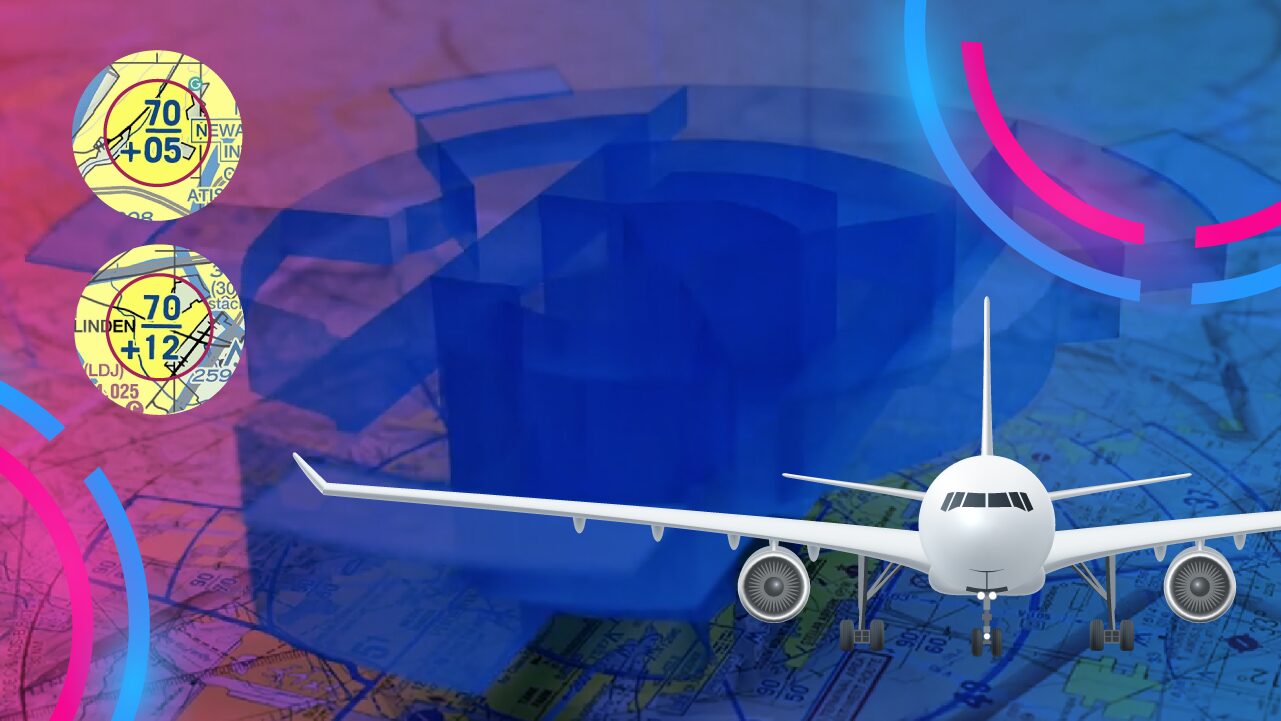As a future aviator, the type of pilot you become highly depends on your training.
In training, you gain aeronautical knowledge, master flight maneuvers, and acquire habits that will stick with you throughout your aviation career.
Although you need flight instruction to learn how to fly airplanes, ground training is equally important to become a competent pilot.
The duration of your training depends on your goal, availability, and finances. Additionally, each pilot license requires different ground school and flight school training.
With many factors at play, it’s crucial to know what to expect in your flight training.
So, what is flight school? What is ground school? Are they related or are they two separate entities?
Let’s delve into the world of pilot training and find out.
What are Ground School and Flight School?
Ground School and flight school are the two parts that make up your pilot training.
In ground school, you learn the theory about how airplanes fly, the weather, and several other aviation-related topics. The goal of ground school is to help you pass the knowledge test.
On the other hand, flight school is where you take practical lessons to become proficient in piloting an aircraft. At the end of the flight school, you will be ready to take your practice test with an examiner.
With the exception of the student pilot certificate, getting any pilot license requires passing both knowledge and practical tests.
Becoming a pilot requires knowledge and skill, and you can only obtain those two through quality training in both ground school and flight school.
Ground School
Ground instruction differs significantly between flight schools.
Why? Because pilot schools come in two flavors: Part 61 and Part 141.
Those parts are sections of the Federal Aviation Regulations, or FARs. The FAA allows schools to operate under either part.
The FAA requires Part 141 schools to have an approved ground training course, which must meet the FAA’s minimum curriculum requirements.
Conversely, the FAA mandates nothing of the sort from Part 61 schools. However, you must receive and log ground training from an authorized instructor or complete a home-study course (such as the one that Pilot Institute offers) before you apply for a pilot certificate.
Either way, you must acquire the minimum aeronautical knowledge to operate an aircraft safely.
Different phases of your pilot training require different ground training, though.
Pre-solo
Prior to flying an airplane alone for the first time, you need to pass a pre-solo knowledge test. This test is different from the Private Pilot aeronautical knowledge test.
The test covers airspace rules and procedures for the airport where you’re going to perform your first solo flight. It also verifies your knowledge of the flight characteristics and operational limitations of the aircraft you’re going to fly solo.
Your instructor will administer the test, reviewing your answers before he or she authorizes you to fly solo.
Private Pilot
Before getting your private pilot license, you must pass a computerized aeronautical knowledge test. The test covers subjects such as the Federal Aviation Regulations, navigation, radio communication procedures, and aerodynamics
Commercial Pilot
As a commercial pilot, it’s only logical to have greater knowledge than a private pilot. In addition to what you learned while obtaining a private pilot certificate, you should also have satisfactory knowledge in advanced areas, including performance charts, emergency operations, and the use of air navigation facilities.
Flight Instructor
You need a commercial pilot license before getting into flight instruction, which gives you a substantial aeronautical knowledge. Still, to become a flight instructor, you must have a complete comprehension of the fundamentals of instructing. This includes a good grasp of the learning process, effective teaching, and student evaluation and testing.
Airline Transport Pilot
Becoming an airline transport pilot requires you to demonstrate the highest level of aeronautical knowledge. You need to acquire a solid understanding of complex topics, including weather systems, air navigation under instrument meteorological conditions, and Crew resource management.
Ground School Tip
Whether you’re enrolling in a formal ground program or taking a home-study course, you can benefit from several online resources to enhance your understanding of aeronautical subject. One such resource is Pilotinstitute.com, where you can access a quality online ground school.
Flight School
Although you’re required to attain the same standard of flight proficiency, flight training varies between Part 61 and Part 141 pilot schools.
While training at Part 141 schools requires a structured syllabus, Part 61 flight school often depends on your flight instructor’s discretion.
In flight school, you learn how to perform the maneuvers, procedures, and tasks associated with operating and aircraft. The skills you’ll acquire include how to perform a takeoff, communicate with the air traffic control, and recover from stalls.
Flight lessons consist of a briefing, where your instructor explains the objectives of the flight. Following that, you get to practice the maneuvers discussed on the training flight. After the flight, your instructor debriefs you on your performance.
Minimum flight hours to obtain licenses also differ between the two types of schools. More on that soon.
Pre-solo
Before your flight instructor authorizes you to fly solo for the first time, you must become proficient in quite a few flight maneuvers, procedures, and operations. Amongst others, you will have to demonstrate proper understanding of flight preparation, taxiing, takeoff, landing, and go-arounds.
The time it takes to master those flight skills varies between students depending on many factors, including aptitude, flight frequency, and of course, the level and quality of aeronautical knowledge.
It could take fewer than 10 hours to 40 hours for you to fly solo. Your instructor will use his or her judgment to determine whether you’re ready for your first solo flight.
Private Pilot
After the first solo, your flight training continues to cover more complex operations, including cross country, night flying, emergency procedures, and basic instrument maneuvers.
The difference in minimum flight hours becomes evident at the private pilot stage. Part 61 schools require at least 40 hours, while Part 141 schools have the minimum at only 35 hours. However, the difference is negligible as most people tend to take 60 to 75 flight hours to obtain a private pilot certificate.
Commercial Pilot
Commercial pilots go through intense flight training, which includes instrument, high altitude, and complex aircraft operations. Moreover, as commercial flight requires flying between different airports, you need to know how to operate within controlled and uncontrolled airspace.
The difference in minimum flight hours is significant when you want to get your commercial license. Part 61 schools require no less than 250 flight hours, but Part 141 schools require only 190 hours. The gap in flight hours, however, doesn’t a difference in the quality of training.
Flight Instructor
Flight instruction requires a high level of skill in performing flight maneuvers and the ability to demonstrate those maneuvers to a student pilot. Training to become a flight instructor ranks among the most intense of any type of pilot training.
You need a minimum of 25 hours of flight training to become an airplane flight instructor. It takes at least 10 hours for the glider category, though.
Airline Transport Pilot
To become an airline pilot, you need flight hours. A lot of them. Depending on your background and education, the number ranges from 750 to 1,500 flight hours. At this point in your aviation career, the term “flight school” is no longer applicable. Your flight training comes from experience, either through working as a flight instructor or learning from more seasoned pilots at an airline.
Flight School Tip
Practice makes perfect, a centuries-old adage that also applies to mastering flight maneuvers. A great way to improve and expedite your flight training is to use “Chair Flying”. Simply put, sit in a chair and perform flight maneuvers, in-flight procedures, and even radio communications. After a while of doing this, operating an aircraft becomes more of an instinct. Repetition is the mother of skill indeed.
One More Thing
You may want to fly for pleasure, and in this case, you could consider a sport or recreational pilot license.
As a sport pilot, you may fly light sport aircraft. Sport pilot certificate came in the early 2000s to make flying more affordable for hobbyists. As such, the minimum flight time to obtain the license is 20 hours before becoming ready for a practical test, or a checkride. You also must pass a knowledge test covering relevant areas of operation.
Recreational pilot certificate allows you to fly bigger, more powerful aircraft than a sport pilot license. It also grants you more privileges. Accordingly, you need a bit more flight training, which translates into a minimum of 30 flight hours. You’re also required to pass a computerized knowledge test before getting your license.
Final Word
Pilots not only master the skill of flight, but they also have sound aviation knowledge. Flight school is important, and so is ground school.
Whether it’s for fun or an airline career, becoming a good pilot requires quality flight training. You need to find the right pilot school, flight instructor, and learning tools for the best results.
It’s worth taking the time to research and compare several pilot schools before you actually enroll in one. Check useful online resources such as the Aircraft Owners and Pilots Association (AOPA) website to get helpful insights on how to choose a good pilot school.



